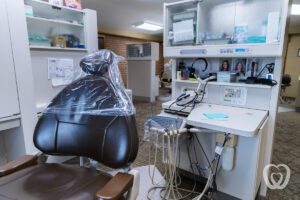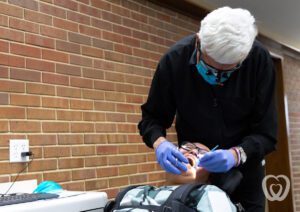Creating a More Inclusive Dental Office–Small Changes That Make a Big Impact for Patients with IDD and Autism
Accessing quality dental care can be a significant challenge for individuals with intellectual and developmental disabilities (IDD) and autism. Many face anxiety or sensory sensitivities that make routine dental visits difficult. The good news? Dental offices can take simple, low-cost steps to create a more supportive and inclusive environment.
By making minor adjustments, dental professionals can increase comfort for patients and improve the experience for families and caregivers. These efforts also enhance the ability of dental teams to deliver care effectively and compassionately.
Start with Staff Training and Awareness
Train your team to recognize the needs of patients with IDD and autism. The My Dental Care Passport can help you do this; it streamlines communication by understanding a patient’s needs before they arrive. Share this document with your patient and caregiver prior to the visit, allowing your team to prepare for the appointment in advance.
Create a Welcoming and Predictable Environment
- Limit overwhelming stimuli like bright lights, loud music, or crowded waiting rooms. Use soft lighting and low-volume background sounds to reduce sensory overload.
- Offer a quiet waiting area or schedule patients with IDD and autism during low-traffic hours to minimize stress and distractions.
- Provide visual schedules or social stories ahead of the appointment to help patients understand what to expect.
Use Adaptive Aids and Comfort Tools
- Weighted blankets, fidget items, or noise-canceling headphones can help regulate sensory input.
- Sunglasses and bite blocks may improve comfort during treatment.
Desensitization Visits
Short, no-treatment appointments to become familiar with the office—can build trust and ease future care. Did you know that some insurance companies pay for these visits? Additional information on these visits can be found here.
Improve Communication and Consent
Speak slowly, clearly, and in simple terms. Use pictures or gestures when possible.
Always explain what you’re doing before and during procedures, even if the patient is nonverbal.
Respect autonomy and consent. Give patients choices where possible, like selecting a toothbrush color or deciding whether to sit up or lie back gradually.
Engage Families and Caregivers as Partners
Ask caregivers for insight into what works best for the individual.
Be flexible—allow caregivers to be present during treatment if it helps the patient feel secure.
Provide take-home visual aids or instructions that reinforce oral hygiene routines at home.
Promote Consistency
Schedule with the same provider and hygienist whenever possible to create familiarity.
Keep detailed notes on each patient’s preferences and sensitivities to prepare for future visits.
Small Adjustments, Big Difference
Inclusivity in dental care doesn’t require a complete office redesign. With thoughtful changes and a commitment to understanding, dental professionals can help ensure that everyone—regardless of ability—can access the care they deserve.
Let’s work together to make oral health accessible to all. Please visit www.pathwaystooralhealth.org for additional resources and educational opportunities to increase your confidence in treating individuals with disabilities.




